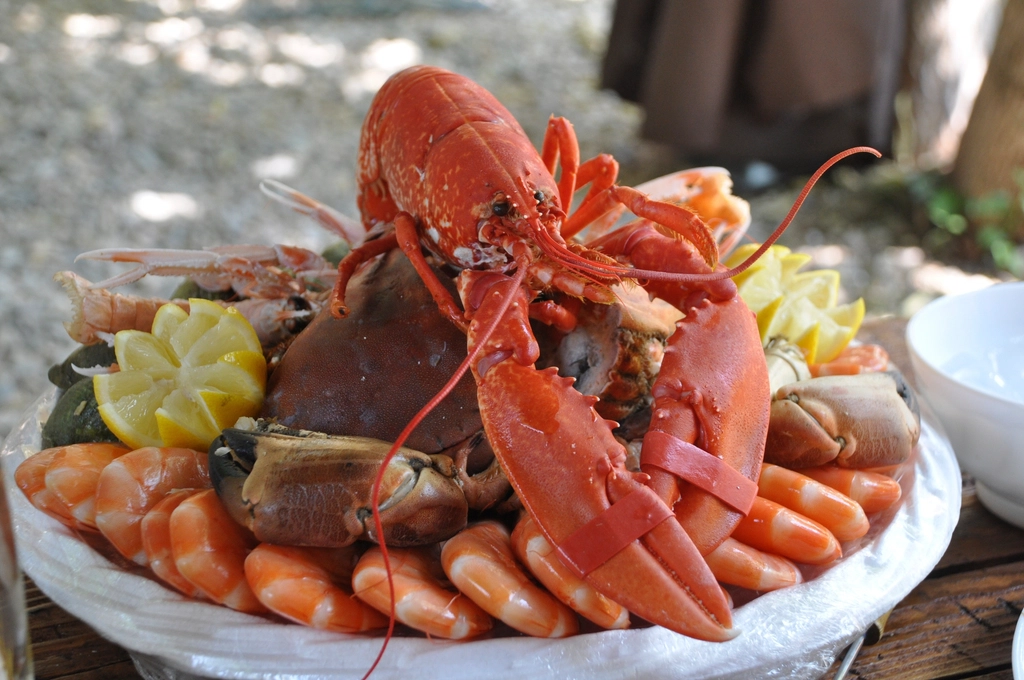Food and Beverage
The 10 Best Healthiest Seafood Options: Nutrient-Rich and Sustainable Choices
“From sardines to salmon, discover the top 10 healthiest and sustainable seafood options for a nutrient-rich diet. 🐟🌱 #Seafood”

Seafood is a treasure trove of essential nutrients and beneficial compounds that can significantly contribute to a healthy diet. From the omega-3 fatty acids that promote heart health to the abundance of vitamins and minerals, incorporating seafood into your meals can have a positive impact on your overall well-being. In this blog post, we will delve into the ten best healthiest seafood options, considering their nutritional content, sustainability, and potential contaminants.
- Sardines:
These small fish are incredibly nutritious, packed with omega-3 fatty acids, vitamin B12, vitamin D, and calcium. Sardines are also low in contaminants and are considered one of the most sustainable seafood options available. - Salmon:
Salmon is well-known for its impressive omega-3 content. It also provides high-quality protein, vitamin D, vitamin B12, and selenium. Opt for wild-caught Alaskan salmon for the best nutritional benefits and sustainability. - Oysters:
Oysters are a true nutritional powerhouse, rich in vitamins B12, D, and zinc. They are a sustainable choice and an excellent source of lean protein. Including oysters in your diet not only benefits your health but also supports local marine ecosystems due to their ability to filter water. - Mackerel:
Mackerel is another fish that boasts high levels of omega-3 fatty acids, along with vitamin D, vitamin B12, and selenium. This flavorful fish is considered a sustainable choice and offers numerous health benefits. - Rainbow Trout:
Rainbow trout is a deliciously mild-flavored fish that is packed with omega-3 fatty acids, protein, vitamin B12, and iron. It is a sustainable choice, particularly when sourced from responsible fish farms. - Clams:
Clams are an excellent source of protein, vitamin B12, iron, and selenium. They are sustainable, low in contaminants, and make a versatile addition to dishes like pasta, chowders, and stir-fries. - Herring:
Herring is an oily fish that delivers a healthy dose of omega-3 fatty acids, vitamin D, and vitamin B12. It is an eco-friendly choice and can be enjoyed smoked, pickled, or grilled. - Cod:
Cod is a lean white fish that provides protein, vitamin B12, selenium, and phosphorus. It is known for its mild flavor and versatility in cooking methods. - Shrimp:
Shrimp is low in calories and rich in protein, vitamin D, and selenium. Choose sustainably sourced shrimp to minimize environmental impact and ensure a healthier choice. - Anchovies:
Anchovies may be small in size, but they are big in nutritional value. These tiny fish deliver omega-3 fatty acids, calcium, and vitamins D and E. They are also a sustainable choice when sourced responsibly.
When it comes to the healthiest seafood options, there is an abundance of choices that offer an array of essential nutrients while also being environmentally responsible. Sardines, salmon, oysters, mackerel, rainbow trout, clams, herring, cod, shrimp, and anchovies are all fantastic choices to boost your overall health while supporting sustainable fishing practices. Incorporate these nutrient powerhouses into your diet and savor the benefits they provide for your well-being and the planet.
What are the Risks of Eating Seafood?
Although seafood is a nutritious option to fulfill dietary nutrient gaps, there are some environmental and health concerns related to its consumption.
Seafood may contain toxins, viruses, parasites, and bacteria that can be harmful if consumed. To avoid getting sick, it is essential to cook fish and shellfish thoroughly. As per the USDA guidelines, most seafood should be cooked to an internal temperature of 145 degrees Fahrenheit.
Contaminants, including Mercury and Others
Overconsumption of certain seafood varieties can have negative health effects due to the presence of contaminants. For instance, specific fish species contain high levels of mercury, a heavy metal that can be easily absorbed by the body. Mercury accumulation is more common in larger fish, as they consume smaller fish that have ingested mercury-rich plankton. Consequently, larger and older fish are typically the most mercury-contaminated.
Regularly consuming foods high in mercury can result in mercury accumulation in the body, leading to health problems like high blood pressure, heart attack, and developmental delay in offspring. Mercury is toxic and can have detrimental effects on the body.
Mercury can have a greater impact on certain groups, such as pregnant and breastfeeding women, as well as children, who are more susceptible to its effects.
To reduce the amount of mercury in your diet, avoid consuming seafood like shark, certain types of tuna, swordfish, tilefish, and king mackerel as they have high mercury levels. Instead, opt for low-mercury options such as trout, cod, oysters, clams, herring, salmon, and sardines.
Recommendations for Incorporating Seafood into Your Eating Plan
Eating seafood can boost the quality of your diet and support and protect your health. However, it’s important to consider the nutrition and environmental impact of seafood when narrowing down options to add to your diet.
Adding seafood to your diet can boost its nutritional quality and promote your overall health. However, it is essential to consider the nutritional composition and environmental impact of various seafood options before including them in your meals.
Read the article in Health titled Healthiest Seafood Options, Ranked for further insight into the topic. https://www.health.com/healthiest-seafood-8630471
https://stmdailynews.com/category/food-and-beverage/